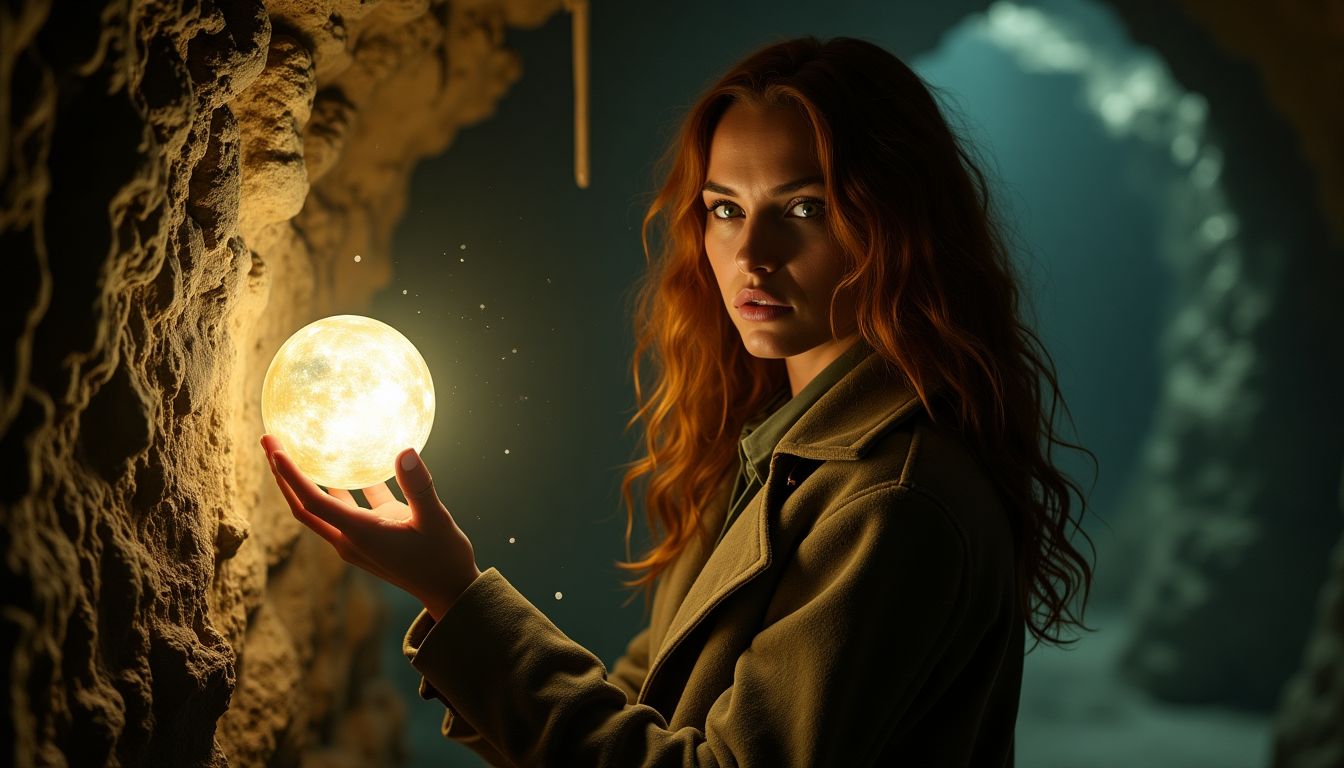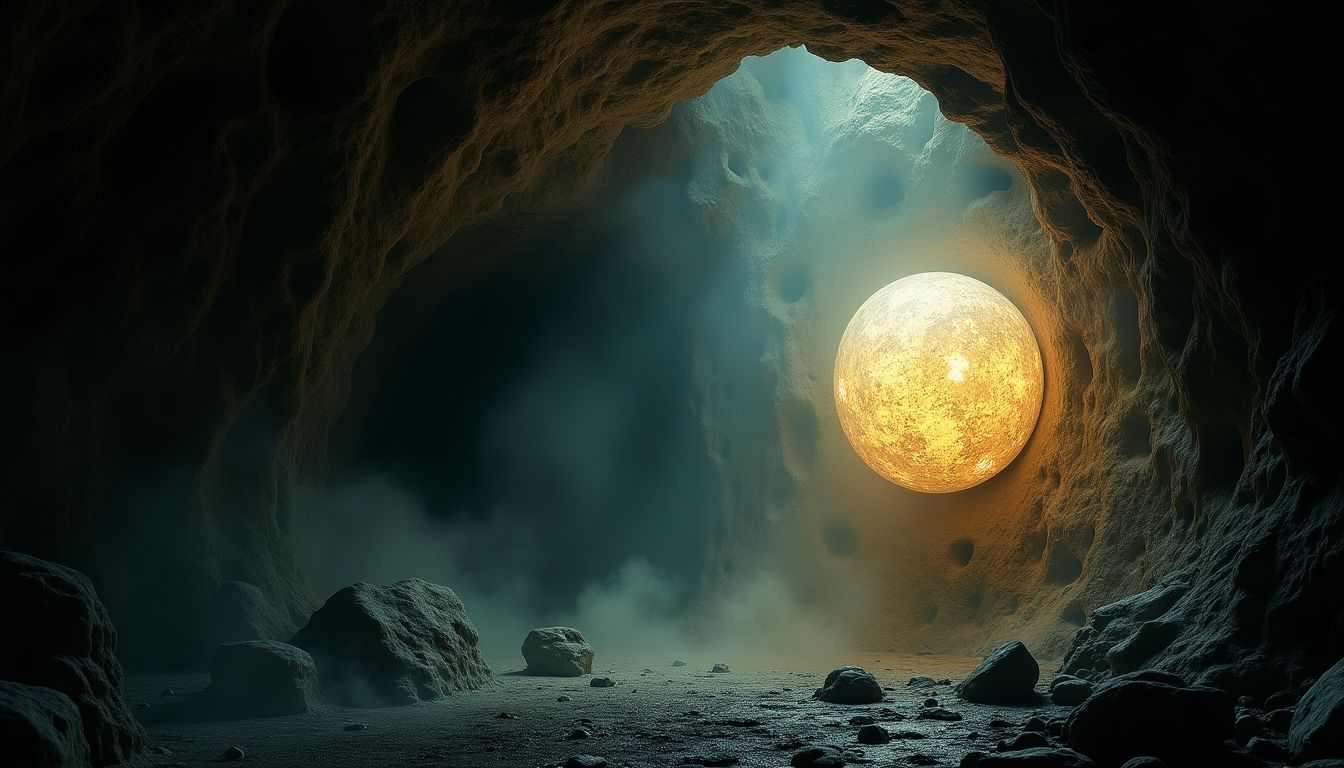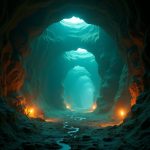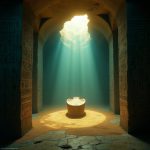In the heart of Finland’s vast wilderness, amidst dense pine forests that whispered secrets older than memory, Layla Kaunissaari stood at the edge of history. A 32-year-old geologist with a halo of loose auburn curls and piercing green eyes that missed nothing, she adjusted her thick woolen coat against the biting Nordic chill. Layla’s boots, scuffed from years of fieldwork, crunched over the gravel path leading to the one place she had come to both fear and obsess over—Onkalo. The "nuclear tomb" built 450 meters below the surface was not just a project; it was a labyrinthine time capsule destined to outlive human civilization, holding the most dangerous remnants of mankind's progress: nuclear waste.
Layla wasn’t just overseeing the structural integrity of the bedrock; she had been handpicked as the project’s cultural consultant. Her task? To figure out how to mark Onkalo in ways future beings—human or otherwise—would understand. How do you warn someone 100,000 years from now, in any language, not to dig? It was a duty that weighed so heavily it occupied her dreams and seeped into her every interaction. But today wasn’t just another day of calculations and assessments. Today, Onkalo had whispered its own secrets.
The Discovery
“Layla, you need to see this,” came a voice through her earpiece. It was Esko, the project’s lead engineer. His voice was tight, uncharacteristically tense, and that alone was enough to quicken her pulse. Layla descended into the steel-and-concrete elevator, a cold box that seemed absurdly narrow now that her breath felt caught in her chest. She stared at her reflection in the polished elevator doors, noting the furrow in her brow and the anxious set of her lips. “Deep breath,” she murmured to herself as the lift began its slow, grating descent into the Earth’s depths.
When the doors opened, Esko was waiting for her, his wiry frame tense against the stark fluorescent lighting. His helmet lamp cast an eerie shadow behind him. “We were doing the routine scan in Tunnel C-17,” he said, voice low, “and the imaging drones detected… something.” He handed her a monitor, and as her eyes adjusted to the screen, her breath caught. Behind the layers of copper casing and clay, incomprehensible carvings faintly glimmered. Uneven, jagged lines formed shapes that looked almost human but impossibly ancient.
“Is this…?” Layla trailed off, her voice a whisper. It wasn’t possible. The Onkalo site was chosen, in part, because its bedrock was untouched by human history, untouched by any known civilization. Yet here was something undeniably deliberate. Something carved.
The Labyrinth of Yesterday
Within hours, a small team of experts was called to carefully breach the protective casing of the material without disturbing the surrounding integrity. Layla stayed glued to the site, her eyes wide as they unearthed the entrance to a cavern behind what should have been an unbroken wall of granite. As the team cleared the space, a haunting tableau emerged: intricate frescoes danced across the rough walls of the cavern, illuminated by the pale glow of work lamps. They depicted strange humanoid figures locked in struggle with what looked like tendrils of shadow. At the centerpiece of it all was a figure, tall and angular, holding something circular—a glowing orb, perhaps.
“It looks like… a warning,” Esko said, breaking the silence. Layla nodded, but her gut twisted in ways she couldn’t explain. She wasn’t just looking at carvings. She was looking at a history no book had recorded and a mystery time had deliberately tried to forget. Something had been here long before humanity dreamed of nuclear power, and it left this story behind. The orb in the carving glittered faintly under the flashlight’s beam, as though it were made of something other than rock. Drawn like a moth, Layla reached for it before she could stop herself.
The Awakening
The cavern erupted in light as her fingers brushed the orb. A cascade of images seared into her mind: a civilization crumbling under the weight of its own hubris, beings with long, elegant features using tools that danced with energy, and then… darkness. A voice echoed in her head, deep and resonant, speaking no language yet perfectly intelligible. “You dare awaken us.”
Layla staggered back, clutching her head as Esko caught her. “What happened?” he asked, his voice breaking with panic. “What did you do?”
Before she could answer, the walls began to tremble. Dust rained from the ceiling, and an oppressive, almost sentient cold filled the air. The carvings appeared to shimmer as if alive, their stories no longer frozen in time but moving, morphing. The humanoid shapes from the frescoes seemed to slither closer to reality with every second.
“We need to leave. Now,” Layla said, her voice sharp and commanding. The team scrambled, but the ground beneath them seemed to shift, the tunnels twisting into new paths. What had once been a straightforward descent into Onkalo was now a disorienting maze. “This isn’t real,” Esko muttered, his face pale. “It can’t be real.”
“Don’t look at the walls,” Layla barked, having realized the frescoes had begun following them—no, watching them. Pale eyes formed in the shadows of the carvings, unblinking, relentless. It was becoming impossible to distinguish tunnel from illusion.
Forever and Never
After what felt like hours or days—they could no longer tell time—they came upon the elevator. But as its doors slid open, a voice like a shuddering wind filled the cavern. “You cannot undo this. What you have buried here was a mistake. What lies here should not, must not, be forgotten.”
Layla turned to Esko, her heart pounding in her chest. Understanding dawned between them without a word spoken. “The tomb wasn’t for our waste,” Layla whispered, horrified. “It was *already* a tomb.”
The last thing she saw before the elevator closed was the orb glowing in the distance, pulsing as though alive, as though waiting.
Final Thoughts
Weeks later, Finland declared the site permanently sealed, citing geological instability. Layla retired from the project, though she kept her silence about what really happened below. But she knew the truth. The tomb wasn’t a prison for humanity’s sins. It was a monument to its inability to forget what it should never remember. And still, deep within the earth, the carvings moved, spinning tales for an audience of shadows.
Genre: Psychological Horror
The Source...check out the great article that inspired this amazing short story: Inside the world's first nuclear waste storage 'tomb' costing $4 BILLION
Disclaimer: This article may contain affiliate links. If you click on these links and make a purchase, we may receive a commission at no additional cost to you. Our recommendations and reviews are always independent and objective, aiming to provide you with the best information and resources.
Get Exclusive Stories, Photos, Art & Offers - Subscribe Today!

























1 comment